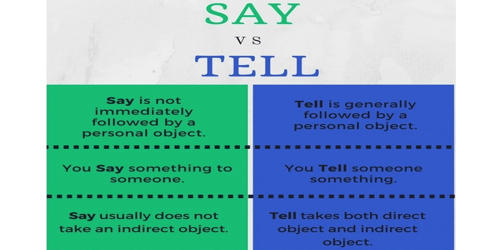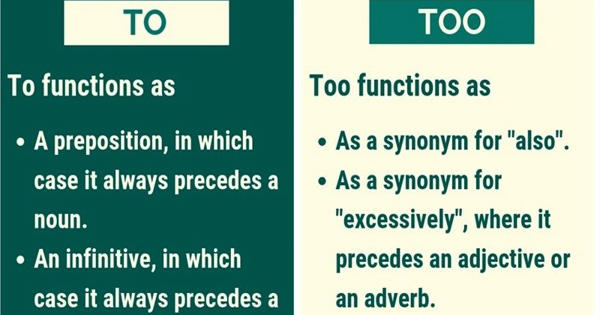Say and tell are irregular verbs. We use ‘say’ and ‘tell’ in different ways in reported speech. The words ‘say’ and ‘tell’ both are irregular verbs, as their past participle form, do not have a regular ‘ed’ ending, i.e. say becomes said and tell becomes told. While say can be used as a noun, verb, and interjection, tell can only be used as a verb. While the word ‘say‘ is used to utter something verbally, ‘tell‘ can be used to give information, give evidence or orders to a person. Tell is used only to instruct or inform, and when the receiver of the information is included as an object of the verb. “Say” and “tell” may have a lot in common, but their personalities are actually very, very different.
So, the first and foremost difference between these two is that we do not mention whom we are referring to, in the case of ‘say’, but we mention it in case of ‘tell’. Tell means “to give information to a person” – so tell (present) and told (past) are always followed by a person.
Difference between Say and Tell –
SAY
- Say means to utter words, in order to express an opinion, feeling, or give some information.
- The word ‘say’ is used to state something, specifically opinion, feelings, suggestions, and so forth.
- Whenever you are uttering a word or speaking something, you are actually saying it. It is used to express your opinion, suggestion, feelings, emotions, etc. and also to deliver some information.
- When you use the word ‘say’, we needn’t use the name of the person to whom we refer.
- Basically, say is used with exact quotes and questions (in the direct speech), however, in case of indirect speech we use the word ‘asked’.
- Example: I am not going to say anything on this matter. She said, “She wants to be alone.”
TELL
- Tell means to provide information to a person either orally or in writing.
- The word, ‘tell’ is used to say something to a person, i.e. provide information or narrate something.
- The word ‘tell’ is used to narrate, communicate, discern, instruct or announce something to someone. So, the name of a person or an object pronoun must follow the verb ‘tell’.
- When you use the word ‘tell’ we need to use the name of the person or an object pronoun, i.e. him, her, them, us, etc. to indicate the person, whom we refer to.
- Basically, ‘tell’ is mainly used when we give orders, instructions, and advice.
- Example: I told her, to stay away from this matter. The teacher told us to complete the project on time.
















